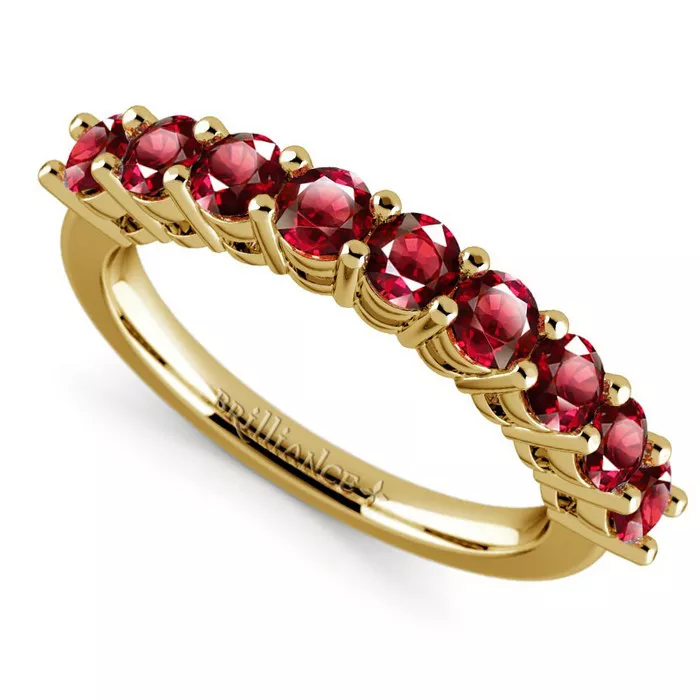Rubies, with their fiery allure and timeless elegance, have captivated humanity for centuries. The historical origins of these precious gemstones trace back to ancient civilizations where they were revered for their rarity and beauty. Renowned for their exceptional quality, rubies have been sourced from various regions, each with its own storied past in the world of gemstone mining.
Burmese Rubies
Among the most illustrious sources of rubies is Myanmar, formerly known as Burma. This Southeast Asian nation has long been celebrated as the world’s leading producer of rubies, particularly the coveted pigeon blood rubies. Renowned for their intense color, remarkable clarity, and exceptional transparency, Burmese rubies command top prices in the global gemstone market.
Emerging from the rich soil of Myanmar, Burmese rubies possess a distinct allure that sets them apart from their counterparts. The term “pigeon blood” refers to the deep red hue reminiscent of the blood of a freshly slaughtered pigeon, a color that is highly sought after by collectors and connoisseurs alike. The exquisite color saturation, coupled with the gemstone’s inherent clarity and transparency, renders Burmese rubies truly extraordinary.
Emergence of African Rubies
In recent years, the landscape of ruby mining has witnessed a significant shift with the emergence of African rubies. Countries such as Mozambique, Madagascar, Kenya, and Tanzania have emerged as prominent sources of these dazzling gemstones, offering a fresh perspective on ruby exploration and extraction.
Mozambique
One of the most notable contributors to the rise of African rubies is Mozambique. Discovered in 2009, Mozambique’s ruby deposits, particularly those near Montepuez, have yielded an abundance of fine-quality rubies that rival their Burmese counterparts. Noteworthy for their impressive size, with some specimens exceeding 10 carats, Mozambican rubies have quickly gained recognition for their exceptional color, clarity, and brilliance.
Madagascar
Since the turn of the millennium, Madagascar has emerged as a significant player in the ruby market, boasting two primary deposits that have garnered attention from gemstone enthusiasts worldwide. While many rubies from these deposits undergo heat treatment to enhance their appearance, there remains optimism for the discovery of even higher-quality specimens in the future.
Kenya and Tanzania
In East Africa, countries such as Kenya and Tanzania have also contributed to the growing prominence of African rubies. Characterized by their strong fluorescence, reminiscent of the legendary Burmese rubies, these gemstones exhibit a captivating allure that appeals to discerning collectors. However, the availability of facet-grade material remains relatively limited compared to other regions.
Quality Factors
When evaluating the quality of rubies, several factors come into play, each contributing to the gemstone’s overall allure and value. Color, clarity, and transparency are paramount considerations for discerning buyers seeking the finest specimens.
Color: The color of a ruby is perhaps its most defining characteristic, with vibrant red hues commanding the highest praise and fetching top prices in the market. The ideal ruby exhibits a rich, saturated red color often referred to as “pigeon blood” red, characterized by its intense hue and uniform distribution throughout the gemstone.
Clarity: Clarity refers to the presence of inclusions or imperfections within the ruby, which can impact its transparency and overall beauty. While some level of inclusion is common in natural rubies, those with minimal to no visible flaws are highly prized for their clarity and brilliance.
Transparency: Transparency, or the degree to which light can pass through the ruby, is another critical factor in determining its quality. Rubies with excellent transparency exhibit a vivid, luminous quality that enhances their visual appeal and allure.
Modern Sources
As the demand for rubies continues to grow, gem hunters and miners have turned their attention to Africa, drawn by the promise of new discoveries and untapped reserves. With Burmese mines depleted and Thai/Cambodian sources exhausted, African ruby deposits offer a beacon of hope for the future of ruby mining.
African Ruby Deposits: The productivity of African ruby deposits, particularly in Mozambique, has been instrumental in meeting the increasing global demand for these precious gemstones. The discovery of high-quality rubies in Mozambique has sparked renewed interest in African mining operations, attracting investment and infrastructure development to support sustainable extraction practices.
Educating Buyers
For prospective buyers of ruby jewelry, navigating the complexities of the market can be daunting. However, armed with knowledge and insight, buyers can make informed decisions and ensure they are purchasing genuine, high-quality rubies.
Insider Tips
When purchasing ruby jewelry, it’s essential to consider the following tips to ensure a rewarding buying experience:
Seek Transparency: Inquire about any treatments or enhancements applied to the rubies, such as heat treatment, which is commonly used to improve color and clarity. Reputable jewelers should provide transparent disclosures regarding the gemstone’s origin and any treatments it may have undergone.
Examine Certification: Request a gemological certificate from a reputable laboratory certifying the authenticity and quality of the ruby. Certificates from recognized organizations such as the Gemological Institute of America (GIA) provide assurance of the gemstone’s characteristics and value.
Evaluate Color and Clarity: Take the time to assess the ruby’s color, clarity, and transparency under different lighting conditions. Look for rich, vibrant hues and minimal inclusions, which signify a high-quality gemstone.
Consider Origin: While rubies from different regions can exhibit varying characteristics, certain origins, such as Burma and Mozambique, are renowned for producing exceptional gemstones. Understanding the provenance of the ruby can add to its allure and value.
Consult with Experts: When in doubt, seek guidance from experienced gemologists or jewelry professionals who can provide valuable insights and recommendations based on their expertise.
Conclusion
In conclusion, the world of rubies is as rich and diverse as the gemstones themselves. From the legendary Burmese rubies steeped in history and tradition to the emerging African rubies that represent the future of the industry, each source contributes to the timeless allure of these precious gems. By understanding the historical origins, quality factors, and modern sources of rubies, buyers can embark on a journey of discovery, acquiring treasures that will be cherished for generations to come.


